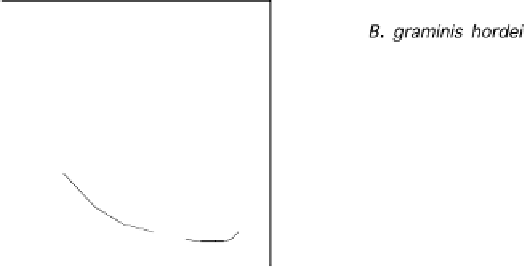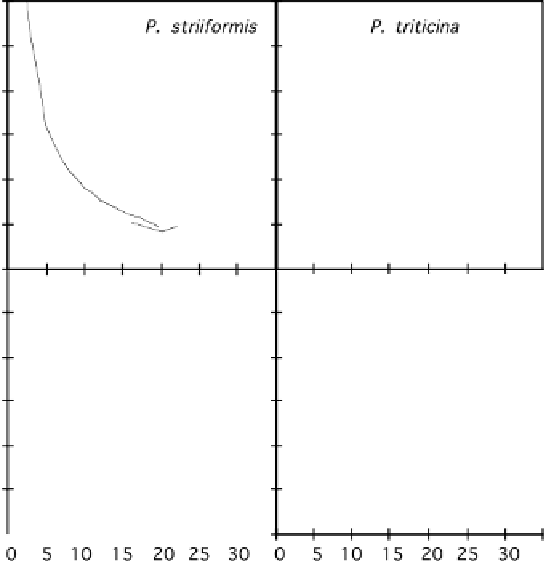Agriculture Reference
In-Depth Information
Figure 15.1. Relationships between latent period (in days) and temperature (°C) for
Puccinia
striiformis
f.sp
. tritici
on wheat (-
♦
- Tollenaar, 1985; -
- Zadoks, 1961),
Puccinia triticina
on wheat (-
♦
- Tollenaar, 1985; -
z
- Tomerlin
et al
., 1983; -
- Johnson, 1980; -
∆
-
Eversmeyer
et al
., 1980),
Puccinia graminis
f.sp
. tritici
on wheat (-
♦
- Tollenaar, 1985) and
Blumeria graminis
f.sp
. hordei
on barley (-
♦
- Pauvert and de la Tullaye, 1977).
A second factor affecting colony growth is precipitation. While the development
of colonies is not markedly affected by small droplets, colony growth is impaired
partially or totally by heavy precipitation due to the high terminal velocity of large
droplets causing destruction of conidiophores (Merchán and Kranz, 1986c).
The three rusts differ by their lesion size, stem rust being intermediate between
stripe rust and leaf rust. Leaf rust induces small restricted pustules with an expansion
2
(Berger
et al.
, 1995); stem rust differentiates larger
ones, but generally colony growth can be neglected for these two rusts. When lesion
density is low,
P. triticina
produces concentric rings of minute secondary lesions
around the sporulating primary lesions.
Puccinia striiformis
is unique among the
biotrophic pathogens because of its semi-systemic growth, i.e. the ability of a lesion
to grow within a whole leaf. The sporulation zone increases continually over time.
The growth of the lesion was found to be linear (8.8-18.8 mm
2
day ), but the rate of
growth of the lesion on certain cultivars appears to decrease with maturation (Emge
-1
rate of 0.007 -0.04 mm
day
-
1









































